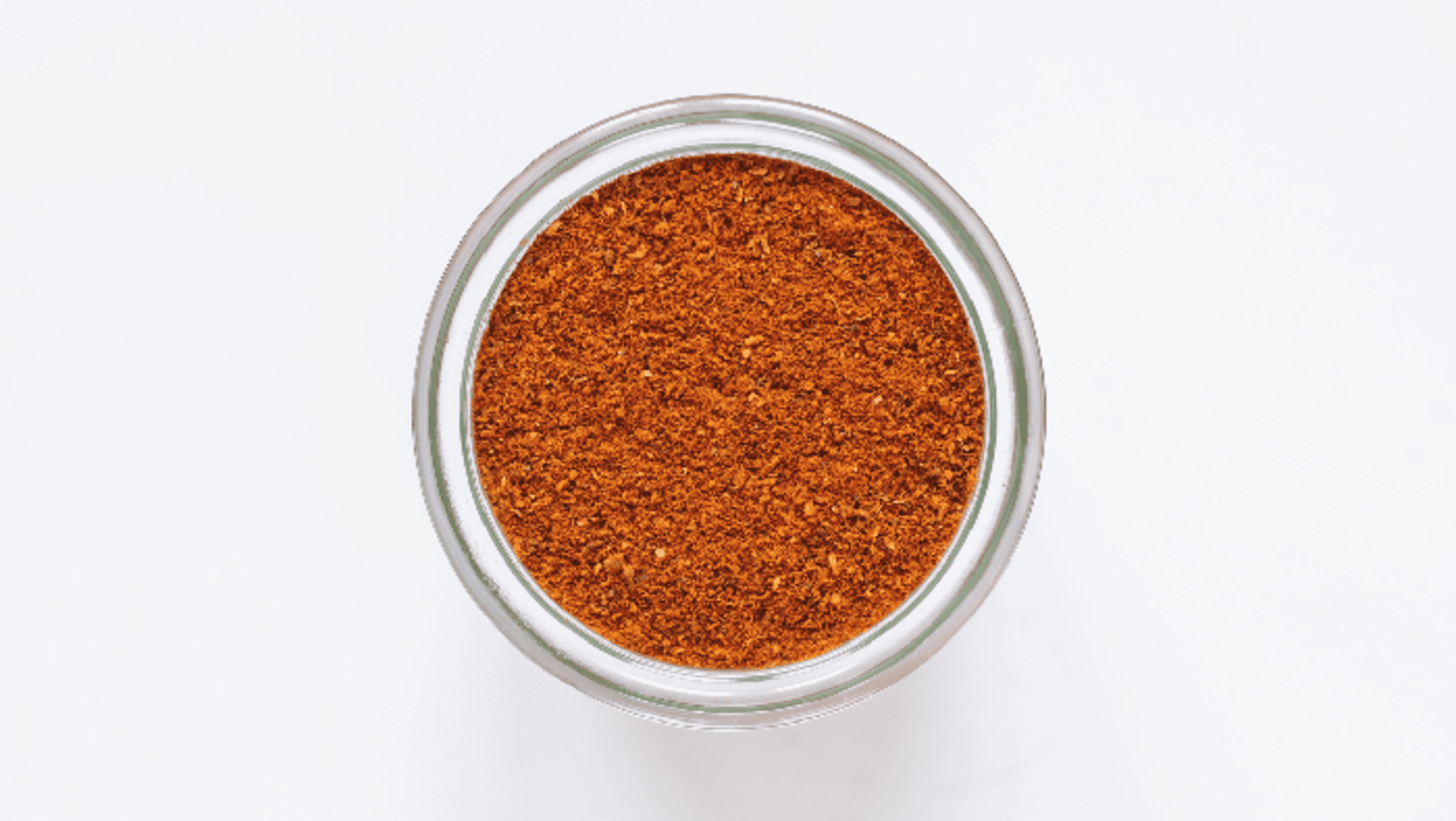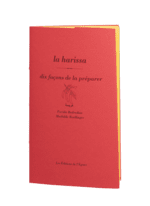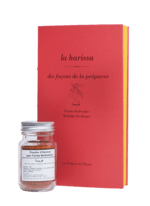Harissa Powder by Farida Bedredine
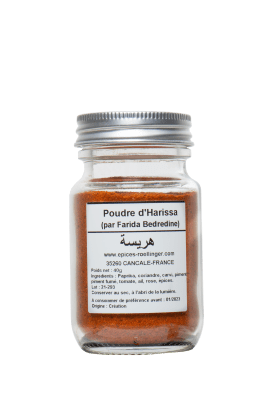
Ingredients: Paprika, coriander, caraway, chiles, smoked chiles, tomatoes, garlic, rose petals, thyme, spices
A fragrant blend of chiles to spice up your cooking.
Collaboration
€9.20
40 g
Recommendations
A powdered spice blend of several different chiles. Use to spice up and season all your favorite dishes.
An exceptional addition to tomato-based dishes, roasted and grilled meats, vinaigrettes, hummus and baked fish!
Powdered harissa is incredibly easy to use: Add it to dishes from the start, stir it into marinades, or sprinkle it on as a finishing spice. It’s great on sandwiches, too!
Harissa powder can be mixed into a harissa paste. (Check out our recipe!)
An exceptional addition to tomato-based dishes, roasted and grilled meats, vinaigrettes, hummus and baked fish!
Powdered harissa is incredibly easy to use: Add it to dishes from the start, stir it into marinades, or sprinkle it on as a finishing spice. It’s great on sandwiches, too!
Harissa powder can be mixed into a harissa paste. (Check out our recipe!)
Our recipes
-
Allergens
Absent, except for cross-contamination.
May contain traces of sesame, celery, mustard, soy. - Origin Original Creation 2021
- Storage / Use In a cool, dark, dry place.
In gift sets
€230 / kg
The words of Mathilde Rœllinger
My goal was to create a harissa powder that matched the flavors and sensations evoked by Farida Bedredine.Farida is a journalist, media personality (TV-Radio) and chef who is passionate about cooking. She has written several cookbooks, including her most recent, 'I Love Food' (Editions First, 2018). Farida is interested in all types of cuisine from around the world. For her, 'Cooking is culture you experience through taste.' She told me that working on this harissa represented a return to the foods of her childhood and an hommage to the Kabyle culture of Northern Algeria.
Paprika lends its intense crimson color and sweet pepper notes to this harissa powder. Hot chile peppers bolster the flavors without overpowering the aromatic bouquet of coriander, caraway, and cinnamon. A hint of cumin and wild Mediterranean herbs lift the blend with a fresh, green note. Farida chose to add a smoked chile to mimic the flavors of fire-roasted mutton in the Kabyle tradition. A few rose petals are the crowning inclusion and act as a gateway to the fragrances and flavors of the desert...
Paprika lends its intense crimson color and sweet pepper notes to this harissa powder. Hot chile peppers bolster the flavors without overpowering the aromatic bouquet of coriander, caraway, and cinnamon. A hint of cumin and wild Mediterranean herbs lift the blend with a fresh, green note. Farida chose to add a smoked chile to mimic the flavors of fire-roasted mutton in the Kabyle tradition. A few rose petals are the crowning inclusion and act as a gateway to the fragrances and flavors of the desert...
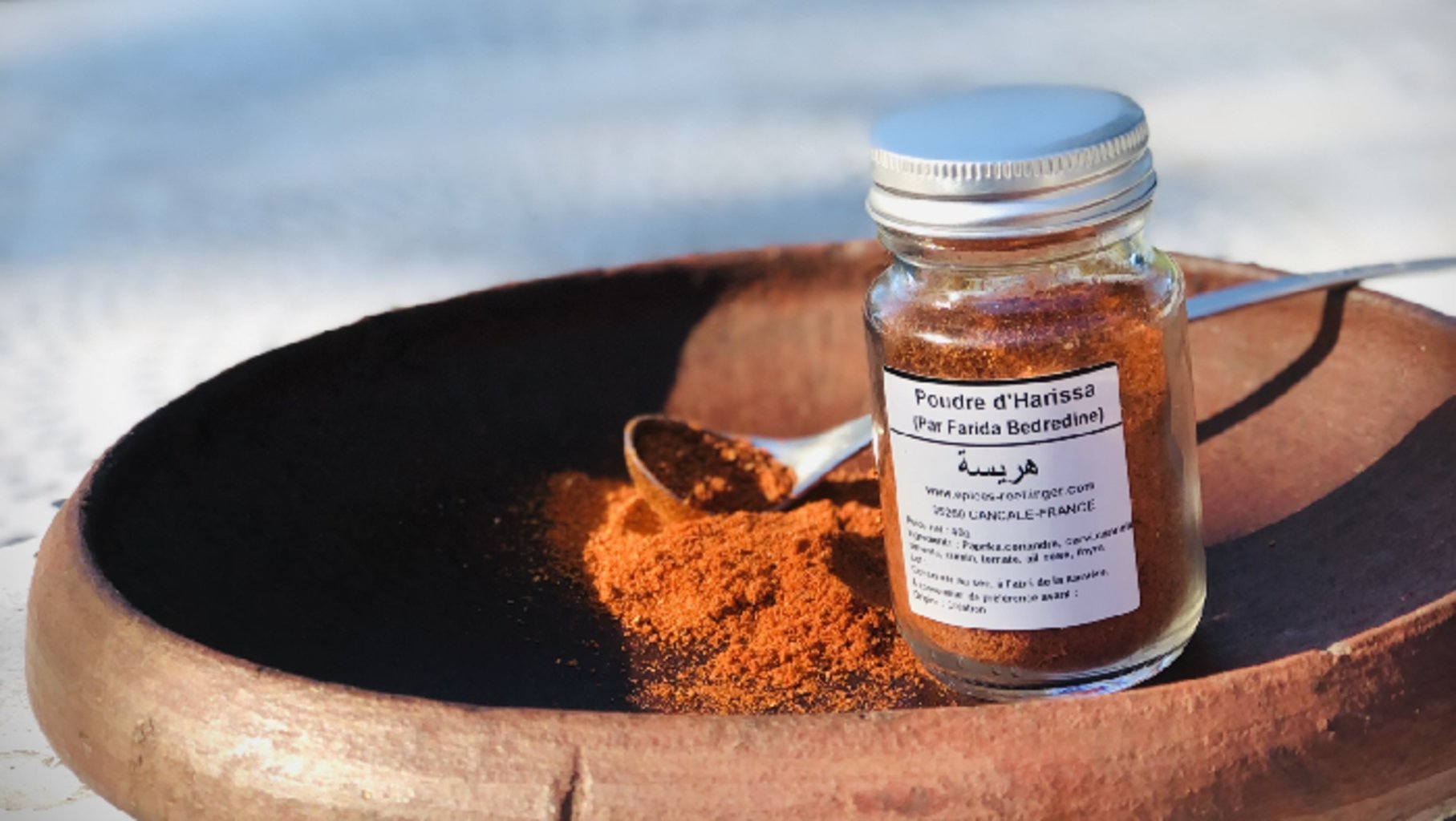
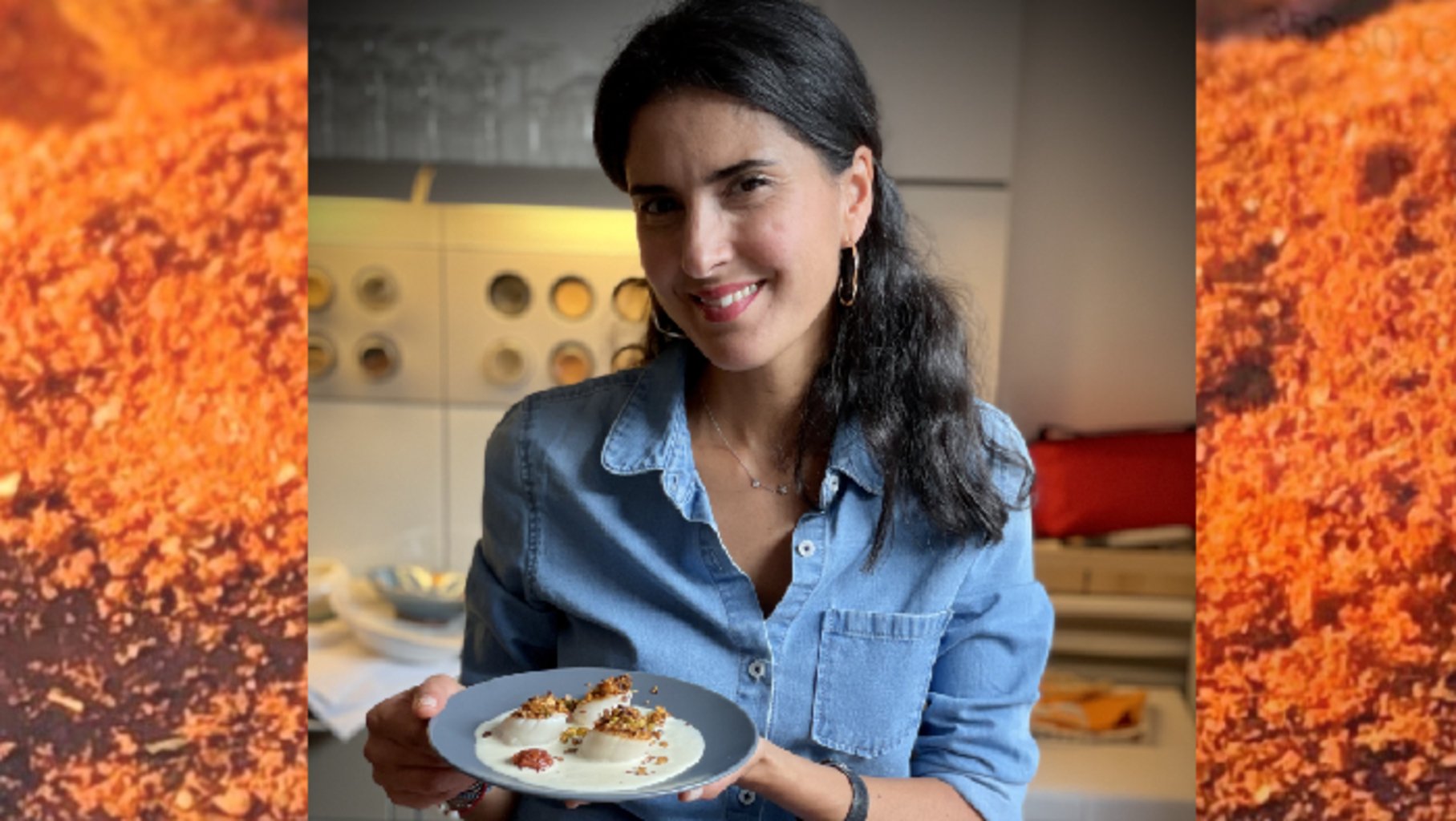
Story
Harissa paste is a North African condiment made by puréeing of hot and mild chiles. It is used extensively throughout the Middle East, and especially in Algeria, Morocco, and Tunisia.
Harissa paste is generally set on the table so diners can add spicy heat to tagines, couscous, meats, salads, and cooked vegetables themselves. In Lebanon, harissa is sometimes used to flavor hummus.
There are a few theories as to the origin of the word 'harissa.' One ties the term to the Arab verb 'harasa,' which means to crush, mash, or grind. Another theory is that the word 'harissa' comes from 'Orissa,' the former name of the Indian state Odisha, where hot chiles have been cultivated since the 17th century. Chiles were first introduced to North African nations by the Spanish following the discovery of America.
Harissa can be found in both paste and powder form. With Farida, we decided to create a harissa powder rather than a paste because of its ease of use in a home kitchen. The powder can also be blended with olive oil and sun-dried tomatoes to make harissa paste. Harissa powder also keeps longer than the purée when stored in a cool, dark, dry place.
Harissa paste is generally set on the table so diners can add spicy heat to tagines, couscous, meats, salads, and cooked vegetables themselves. In Lebanon, harissa is sometimes used to flavor hummus.
There are a few theories as to the origin of the word 'harissa.' One ties the term to the Arab verb 'harasa,' which means to crush, mash, or grind. Another theory is that the word 'harissa' comes from 'Orissa,' the former name of the Indian state Odisha, where hot chiles have been cultivated since the 17th century. Chiles were first introduced to North African nations by the Spanish following the discovery of America.
Harissa can be found in both paste and powder form. With Farida, we decided to create a harissa powder rather than a paste because of its ease of use in a home kitchen. The powder can also be blended with olive oil and sun-dried tomatoes to make harissa paste. Harissa powder also keeps longer than the purée when stored in a cool, dark, dry place.
